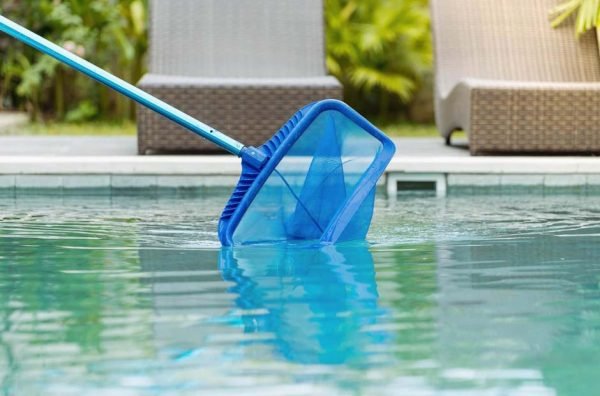Maintaining a comfortable and consistent indoor climate is essential for the well-being and productivity of occupants in residential and commercial buildings. The TrueNest Doral Management team notes that heating and cooling systems are crucial in achieving this goal, as they regulate temperature and humidity to create a pleasant living and working environment.
However, regular servicing of these systems is essential to ensure optimal performance, energy efficiency, and longevity. This article will explore the importance of servicing heating and cooling systems and guide on how often it should be done.
Table of Contents
Understanding the Importance of Servicing Heating and Cooling Systems
Heating and cooling systems, including furnaces, heat pumps, air conditioners, and ductwork, are complex mechanical systems that require regular maintenance to operate efficiently and effectively. Over time, dirt, dust, debris, and other contaminants can accumulate within these systems, impeding airflow, reducing efficiency, and compromising indoor air quality.
Regular servicing helps address these issues and prevent more significant problems. By cleaning, lubricating, and inspecting various heating and cooling system components, trained technicians can identify and address potential issues before they escalate, ensuring reliable performance and minimizing the risk of breakdowns and costly repairs.
Factors Influencing Service Frequency
The frequency of servicing heating and cooling systems can vary depending on several factors, including the type of system, its age, usage patterns, and environmental conditions. Generally, it’s recommended to schedule routine maintenance at least once a year for both heating and cooling systems. However, more frequent servicing may be necessary in some cases to maintain optimal performance and efficiency.
Recommended Service Intervals
1. Annual Servicing
As a general rule of thumb, heating and cooling systems should be serviced annually to ensure optimal performance and efficiency. Ideally, heating systems should be serviced in the fall before the start of the heating season. In contrast, cooling systems should be serviced in the spring before the onset of hot weather. Annual servicing typically involves:
- Cleaning and inspecting key components
- Replacing air filters
- Checking refrigerant levels
- Testing system controls and safety devices
2. Biannual Servicing for Heat Pumps
Heat pump systems, which provide heating and cooling, should ideally be serviced twice a year – once in the spring and once in the fall. This biannual servicing schedule ensures the system can transition between heating and cooling modes as the seasons change.
During these service visits, technicians will clean and inspect the heat pump’s indoor and outdoor components, ensuring optimal performance and efficiency year-round.
3. Seasonal Servicing for Ductwork
In addition to servicing the heating and cooling equipment itself, paying attention to the ductwork that distributes conditioned air throughout the building is essential.
Ductwork should be inspected and cleaned at least once every three to five years to remove accumulated dust, debris, and allergens. Leaks and damage should also be repaired promptly to prevent energy loss and ensure consistent airflow.
4. Regular Filter Changes
In addition to professional servicing, homeowners and building occupants should regularly replace air filters in heating and cooling systems. Depending on the filter type and the usage level, filters should be replaced every one to three months to maintain optimal airflow and indoor air quality. Clogged or dirty filters can restrict airflow, reduce system efficiency, and contribute to poor indoor air quality.
Signs That Servicing Is Needed
In addition to following a regular servicing schedule, it’s essential to be vigilant for signs that heating and cooling systems may require attention between service visits. Some common indicators that servicing may be needed include:
Unusual Noises: Grinding, rattling, or banging noises from the heating or cooling system could indicate mechanical problems requiring attention.
Uneven Heating or Cooling: If certain areas of the building are consistently warmer or cooler than others, it could indicate issues with the ductwork, airflow, or system balance.
Increased Energy Bills: A sudden spike in energy bills without a corresponding increase in usage could indicate reduced system efficiency, possibly due to dirty filters, clogged coils, or other issues.
Frequent Cycling: Heating or cooling systems that cycle on and off frequently, known as short cycling, may be experiencing issues with temperature control, airflow, or system balance.
Visible Damage or Leaks: Visible damage to the heating or cooling equipment, such as rust, corrosion, or leaks, should be addressed promptly to prevent further damage and ensure safe operation.
The Benefits of Regular Servicing
Regular servicing of heating and cooling systems offers several benefits for homeowners, building occupants, and property owners. These benefits include:
Improved Energy Efficiency: Regular servicing helps to ensure that heating and cooling systems operate at peak efficiency, reducing energy consumption and lowering utility bills.
Extended Equipment Lifespan: By addressing minor issues before they escalate, regular servicing helps to prolong the lifespan of heating and cooling equipment, delaying the need for costly replacements.
Enhanced Comfort: A well-maintained heating and cooling system provides consistent, reliable comfort year-round, ensuring a pleasant indoor environment for occupants.
Improved Indoor Air Quality: Servicing includes cleaning and inspecting components such as air filters, coils, and ductwork, which helps to remove contaminants and allergens from the indoor air, improving indoor air quality.
Reduced Risk of Breakdowns: Regular servicing helps to identify and address potential issues before they lead to system failures, reducing the risk of unexpected breakdowns and costly repairs.
The Importance of Regular HVAC Servicing
Regular servicing of heating and cooling systems is essential for optimal performance, energy efficiency, and indoor comfort. By following a routine servicing schedule and promptly addressing minor issues, homeowners, building occupants, and property owners can enjoy year-round reliable, efficient operation of their heating and cooling equipment.
Whether it’s an annual tune-up for a furnace or biannual servicing for a heat pump, professional maintenance is an investment in heating and cooling systems’ long-term performance and longevity.





